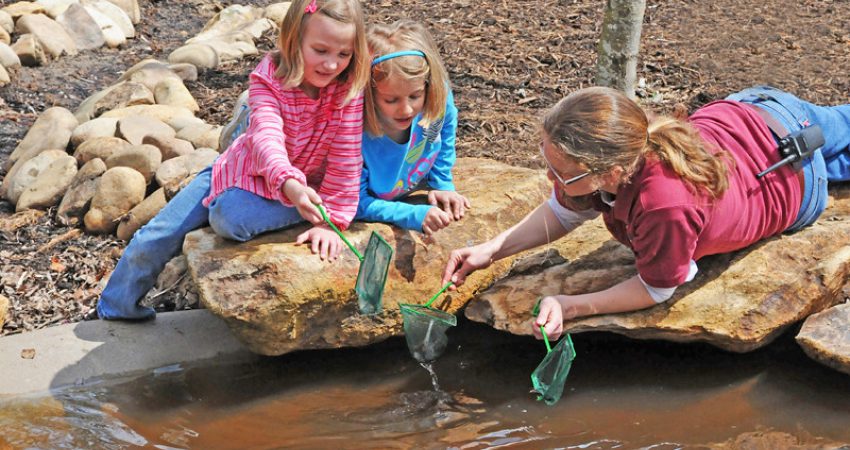
By Toni Dancu - July 2014
PAPER CITATION
Archer, L., Dewitt, J., Osborne, J., Dillon, J., Willis, B., & Wong, B. (2012) ‘Balancing acts’: Elementary school girls’ negotiations of femininity, achievement, and science. Science Education, 96(6), 967–989. doi:10.1002/sce.21031
This paper explores how science-aspiring girls balance their aspirations and achievement with societal expectations of femininity. In-depth interviews revealed two models that the girls tended to follow, termed feminine scientist or bluestocking scientist, and the precarious nature of both of these identities. Archer et al. suggest ways that practitioners can better support girls in their balancing acts.
Theoretical Basis
This paper is rooted in a feminist poststructuralist theory of identity (see Butler, 1990, 1993), in which identity is a way of acting in and with the world. Identity, which includes one’s gender, culture, and class, is nestled within the broader society. As the context shifts, so do people’s ways of enacting their identities. The authors of this paper explore the ways in which girls with self-proclaimed aspirations in science enact their gender identities. That is, how do these girls talk about being girls, especially in relation to their interests in science and academic achievement?
Research Design
This study is part of a larger research initiative that includes surveys of over 9,000 U.K. children, ages 10 and 11, and 170 interviews with children and parents. Only 251 of the more than 9,000 survey respondents identified themselves as keen on science. Only 37% of these students were girls.
This sub-study focuses on interviews conducted with 22 girls who expressed science-related career goals. The girls’ parents were also interviewed. To analyze the interviews, the authors looked for themes that appeared across several of the interviews that defined how the girls and their parents talked about science, achievement, and gender. Once themes were identified, the authors investigated the themes with a more theoretical lens, looking at girls’ and parents’ references to power within classed, racialized, and gendered identities.
The interviews revealed that girls often formed their science identities in relation to the broader discourses that view science as clever and masculine (i.e., science is for boys, and not “girly”). The analysis of the interviews suggested that these 22 science-keen girls enacted two main identities. A smaller proportion of the girls talked about enacting what the authors titled feminine scientist identities. These girls aimed to offset their science identification with performances of “conventional femininity,” presenting themselves as attractive, emotionally engaged, highly social, and sporty; they were interested in fashion, makeup, celebrities, and heterosexual relationships. However, the authors found that these girls had to be careful to find an acceptable balance between heterosexual attractiveness and academic success in a society in which these values are often in tension.
A larger proportion of the science-keen girls talked about enacting what the authors titled bluestocking scientist identities. These girls focused on academic success and showed no interest in enacting heteronormative femininities. They distanced themselves from what they (and their parents) described as “girly" interests such as fashion, sportiness, and attractiveness. These girls were often described by their parents and the researchers as quiet and articulate. All of the science-keen girls from minority backgrounds enacted bluestocking scientist identities. The authors found that bluestocking girls had to be careful to avoid social ostracism and bullying related to broader societies’ negative “geek” labeling. They also had to navigate their recognition that they were, in their own words, a bit “different” from their female peers.
Implications for Practice
The biggest implication of this work is to make teachers and researchers aware of the extensive identity work that girls with science aspirations must undertake to navigate society’s strong associations between science, which is seen as highly clever, and “non-girly” masculinity (an association that emerged from the larger study of over 9000 students and 78 parents). This awareness can help practitioners identify moments when girls are distancing themselves from achievement or from femininity. Educators can then find opportunities to open up the classroom conversation to broaden the view of what is acceptable for females and for scientists (see Davies, 1989, 2003; Francis, 2000). They can help girls who express interest in science to navigate their identities to become successful as girls and as scientists. Ideally, schools, museum-based camps and programs, and after-school programs will provide a space for teachers and students to explore and broaden the associations related to science and femininity by discussing images and texts that reinforce or shatter stereotypes, particularly in regard to STEM.
Finally, the authors caution practitioners about employing female role models and mentors to encourage girls to engage in science. Girls may or may not be able to value or identify with the versions of femininity the role models enact. Therefore, it is important to be sensitive to the different ways of “doing female scientist,” and to ensure that girls have access to female scientists they can relate to.
References
Butler, J. P. (1990). Gender trouble: Feminism and the subversion of identity. London: Routledge.
Butler, J. P. (1993). Bodies that matter: On the discursive limits of sex. London: Routledge.
Davies, B. (1989). The discursive production of the male/female dualism in school settings. Oxford Review of Education, 15(3), 229–241.
Davies, B. (2003). Shards of glass: Children reading and writing beyond gendered identities. Cresskill, NJ: Hampton Press.
Francis, B. (2000). The gendered subject: Students’ subject preferences and discussions of gender and subject ability. Oxford Review of Education, 26(1), 35–48.




